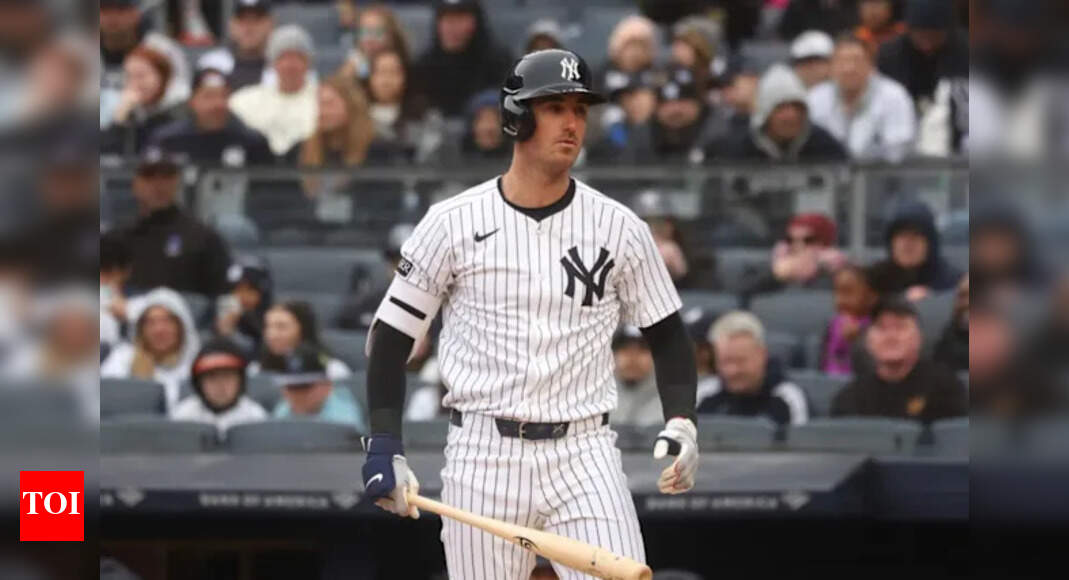The 2025 Major League Baseball offseason is shaping up to be one of the most consequential in recent memory for New York baseball, as both the Yankees and Mets face critical decisions that could define their competitive windows for years to come. At the center of this high-stakes drama are two All-Star sluggers: Cody Bellinger and Pete Alonso, whose contract situations will likely dominate headlines and potentially reshape the balance of power in the Big Apple.
The $80 Million Question: Bellinger’s Yankees Future
Cody Bellinger’s arrival in the Bronx marked a significant coup for the Yankees front office, bringing a former MVP with championship pedigree to bolster their lineup. However, his impending free agency represents both an opportunity and a dilemma for the organization. The $80 million investment the Yankees made in Bellinger was predicated on his ability to return to his 2019 MVP form, when he launched 47 home runs and posted a .305/.406/.629 slash line for the Los Angeles Dodgers.
Bellinger’s versatility has been a key asset for manager Aaron Boone, as the switch-hitting outfielder can play multiple positions while providing protection in a lineup that has historically been right-handed heavy. His ability to play both corner outfield positions and first base gives the Yankees tactical flexibility that extends beyond his offensive contributions.
The Financial Landscape
The Yankees’ payroll situation adds another layer of complexity to the Bellinger negotiations. With luxury tax implications looming and other key players requiring extensions, the front office must carefully balance competitive aspirations with financial sustainability. Industry analysts suggest Bellinger could command anywhere from $150-200 million on the open market, depending on his 2024 performance and the overall free agent landscape.
Pete Alonso: The Mets’ Homegrown Superstar
Across town, the New York Mets face their own franchise-altering decision with Pete Alonso. The “Polar Bear” has been the face of the Mets’ offensive resurgence, setting the rookie home run record in 2019 with 53 blasts and consistently ranking among the National League’s premier power hitters. His connection to the fanbase runs deeper than statistics, as he represents the homegrown talent that Mets supporters have long craved.
Alonso’s market value extends beyond his on-field production. He’s become a cultural icon in Queens, known for his clutch hitting in crucial moments and his genuine connection to the community. The Home Run Derby champion has repeatedly expressed his desire to remain a Met for life, but business realities may complicate those aspirations.
Market Forces and Competition
The first baseman market in recent years has seen significant investment, with players like Freddie Freeman, Matt Olson, and Jose Abreu commanding substantial contracts. Alonso, entering his prime years, represents the cream of the crop among available first basemen, potentially positioning him for a contract exceeding $200 million over six to eight years.
Strategic Implications for Both Organizations
The decisions surrounding Bellinger and Alonso extend far beyond individual player evaluation. For the Yankees, retaining Bellinger signals a commitment to maintaining their competitive window with Aaron Judge and Gerrit Cole anchoring the roster. Losing him could force the organization to pivot toward younger, more cost-effective alternatives or pursue other high-profile free agents.
The Mets, under owner Steve Cohen’s stewardship, have demonstrated a willingness to spend aggressively to build a championship contender. However, even with Cohen’s deep pockets, the organization must consider competitive balance tax implications and the opportunity costs of allocating significant resources to one position.
Ripple Effects Across MLB
The decisions made by both New York franchises will have ramifications throughout Major League Baseball. Teams like the Houston Astros, Seattle Mariners, and San Francisco Giants are already positioning themselves as potential suitors for either player, creating a competitive bidding environment that could drive prices even higher.
The timing of these decisions also coincides with a broader shift in baseball economics, as television revenue streams evolve and teams reassess their spending strategies in an increasingly competitive landscape.
Historical Context and Precedent
New York baseball has a rich history of blockbuster free agency decisions that have shaped franchise trajectories. The Yankees’ signing of Alex Rodriguez, CC Sabathia, and more recently, Gerrit Cole, demonstrates their willingness to make franchise-defining investments. Similarly, the Mets’ pursuit of premium talent under Cohen mirrors the aggressive approach that characterized their championship teams of the 1980s.
Historical precedent suggests that losing cornerstone players can have lasting competitive consequences, particularly in a market as demanding as New York, where fan expectations remain perpetually high.
The Broader Economic Picture
The contracts that Bellinger and Alonso ultimately sign will serve as market indicators for future free agency classes. With younger stars like Vladimir Guerrero Jr., Bo Bichette, and others approaching their own free agency decisions, the precedent set in 2025 could influence player expectations and team strategies for years to come.
Additionally, the ongoing evolution of baseball analytics continues to refine how organizations evaluate player worth, with advanced metrics playing an increasingly prominent role in contract negotiations alongside traditional statistics.
Key Takeaways
- Both franchises face franchise-defining decisions that will impact their competitive windows and financial flexibility
- Bellinger and Alonso could command combined contracts exceeding $400 million, reshaping the free agent market
- The decisions will have ripple effects throughout MLB, influencing other teams’ strategies and player valuations
- New York’s demanding market adds pressure to retain homegrown and adopted stars
- Luxury tax implications will play a crucial role in both organizations’ decision-making processes
- The 2025 offseason could determine the balance of power in New York baseball for the next decade
As the 2024 season progresses toward its conclusion, all eyes will be on how these situations develop. The ultimate resolution of both cases will not only determine the immediate competitive landscape in New York but will also establish important precedents for how premier talent is valued and retained in modern baseball’s complex economic environment.

Born and raised amidst the hustle and bustle of the Big Apple, I’ve witnessed the city’s many exciting phases. When I’m not exploring the city or penning down my thoughts, you can find me sipping on a cup of coffee at my favorite local café, playing chess or planning my next trip. For the last twelve years, I’ve been living in South Williamsburg with my partner Berenike.

